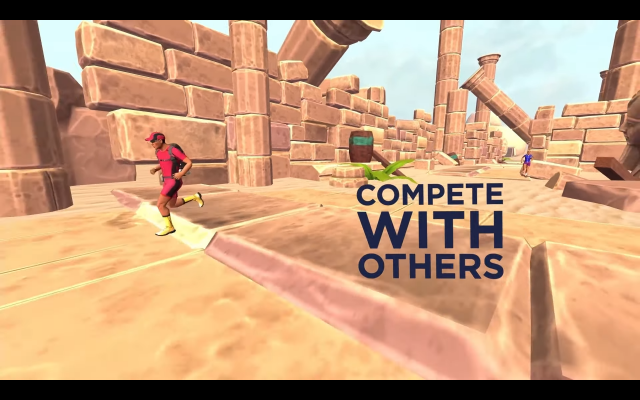The pandemic has been caused a huge impact on the world we knew just 2 years ago. Tremendous shifts to lockdowns and Work From Home arrangements have forced many to abandon their usual outdoor schedules and lifestyles. While some have continued or turned to outdoor exercises like jogging and cycling, many others continue to lead more sedentary lifestyles while enjoying the comfort of home. Or rather yet, working out at home can be really boring, especially the feeling of being cramped in a small space while doing your calisthenics workout. However, things are about to change.
Enter HOLOFIT, a VR Fitness app for your VR headset. It connects to fitness equipment like rowing machines, ellipticals/bikes, or cadence sensors for running movement tracking. It uses Bluetooth which sends your workout data to HOLOFIT. That is how your movements are tracked in virtual reality, perfectly synchronized with what you’re doing on your fitness machine.


HOLOFIT helps make your fitness fun, keeps you motivated and gives you the chance to connect with other members from around the world, all from your fitness machine.
VR Fitness has actually been scientifically proven to lessen workout pain because you’re distracted, so you end up working out for longer. Different game modes keep you motivated and keep you coming back for more, while all the amazing worlds keep you entertained.
Personally, I love this application of VR to physical exercise. It is reminiscent of the Wii Sports system years back, where it was revolutionary to be able to swing the remote to play virtual sports on the TV screen. However, times have changed. With technology now more than ever capable of supporting immersive virtual experiences, user engagement in these virtual sports is higher than ever before. Being able to look around the virtual environment while “running” (mimicking the running movements of the arms) makes a big difference compared to watching an avatar on the screen.
What’s more, the multiplayer capability takes the immersion to a whole new level. Seeing other players in the metaverse exercising also triggers that social itch and sense of competitiveness in the human spirit, and nothing powers a good workout more than competition.
The creators of HOLOFIT have also gone and harnessed the fact that anything can be done in the virtual world. Running in abandoned mines, in the snowy mountains, and ancient Egyptian landscapes are all examples of why the experience can be even more exciting than in real life, being able to visit the ends of the Earth from the safety of your own living room; the toilet, kitchen and bed are close-by, not to mention the shelter above your head when raining.
Still, the current HOLOFIT requires a monthly subscription to be able to use their services, which might be a barrier of entry to most casual players looking to join. Why pay for an exercise game when I have “EPIC ROLLERCOASTERS” and many other free alternatives in the VR game catalogue? Also, while I find the graphics decent enough for a casual session, it still has room for further improvement considering the capabilities of graphics engines like Unreal Engine 5 today. Consideration of long-term immersion has to definitely include good graphics, as the visual sense is responsible for 80% of our learning.
Overall, HOLOFIT is a step in the right direction. It is a living and breathing application of the VR capabilities to fitness, albeit with some barriers to entry and room to improve on graphics. Still, I’m sure this sets a precedent for other companies to build bigger and better fitness VR games in the future, alongside many other applications VR has to offer. Perhaps one day, outdoor exercise would be a thing of the past.
